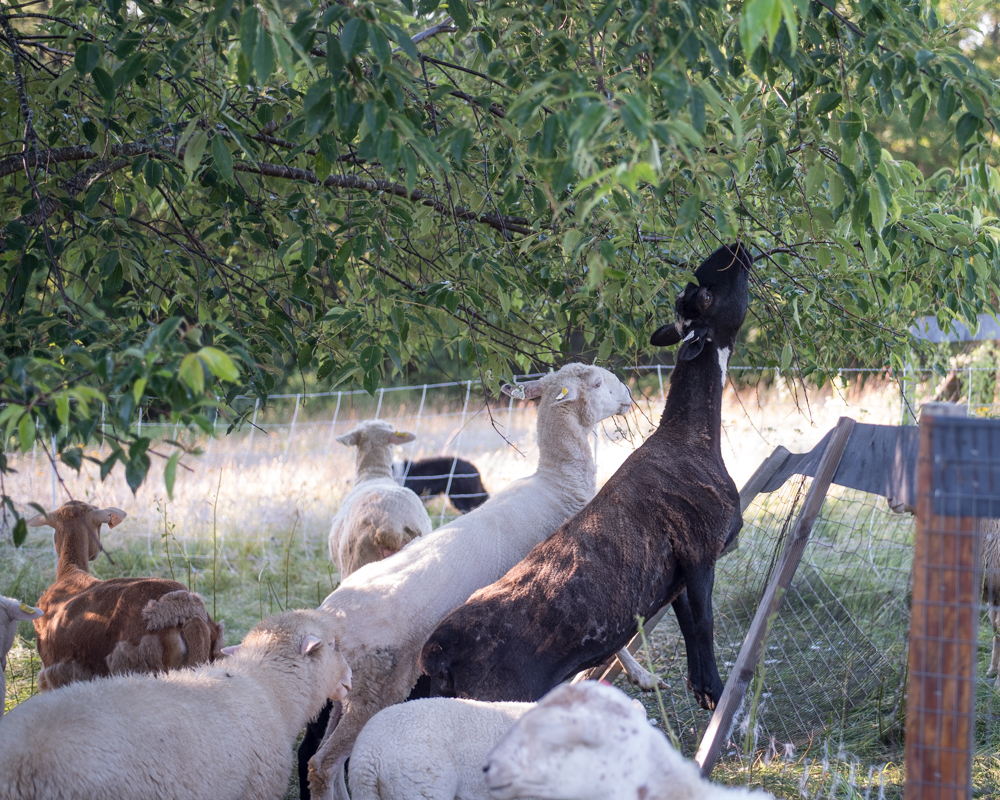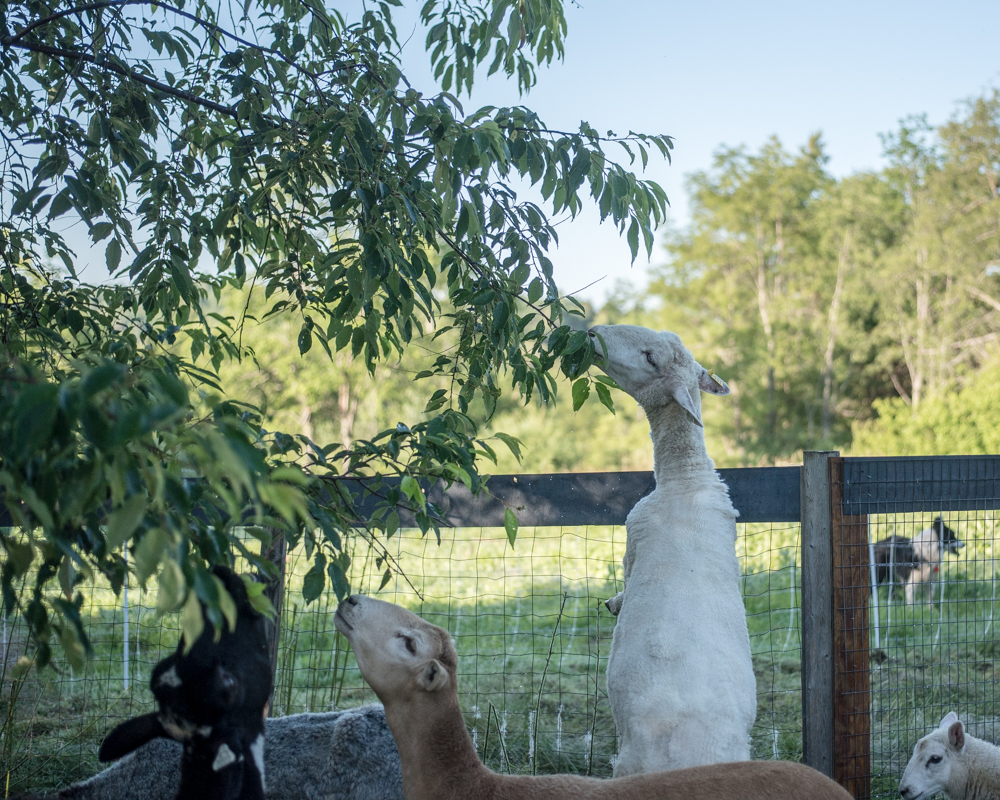More evidence that nothing’s simple:

 I was telling Bill about the fact that some of the ewes were very resourceful in getting to the leaves of this peach tree, and I was pleased that they were maximizing the nutritional potential of the pasture. Bill reminded me that I should be extremely careful about any broken branches bearing wilted leaves, as these can cause rapid, fatal cyanide poisoning in sheep. I was generally aware of the issue (because Bill had mentioned it before), but I didn’t realize than as little as a mouthful of leaves can kill a lamb.
I was telling Bill about the fact that some of the ewes were very resourceful in getting to the leaves of this peach tree, and I was pleased that they were maximizing the nutritional potential of the pasture. Bill reminded me that I should be extremely careful about any broken branches bearing wilted leaves, as these can cause rapid, fatal cyanide poisoning in sheep. I was generally aware of the issue (because Bill had mentioned it before), but I didn’t realize than as little as a mouthful of leaves can kill a lamb.
I’m now racking my brain to remember whether the broken branch on this tree had any leaves on it. I’m talking myself into believing that there weren’t, as the sheep have had access to the tree all day, and there were no dead animals when I was there late this afternoon. Given how enthusiastic the sheep are about these leaves, I’m telling myself that they would have started with the easy-to-reach ones. Denial and rationalization are my touchstones of sanity these days.
For those who are curious about why a mouthful of wilted cherry leaves could kill a sheep, here’s my understanding of the chemistry involved: Trees in the genus Prunus, including apple, cherry, plum, and peach (as well as lots of other common plants), contain a compound called a cyanogenic glycoside which breaks down to release cyanide. These compounds are stored in a sealed container (a vacuole) in the plant cell, while the enzymes that break them down are circulating freely in the rest of the cell. When the cell is disrupted, by wilting, for example, the vacuole breaks, the enzymes mix with the the glycoside, and cyanide is released. It seems that these compounds evolved as a plant defense against herbivores — if you chew my leaves, I poison you with cyanide. Bill assures me that the danger is real, as he once found a lamb dead with a mouthful of cherry leaves, but I am a little confused about the nature of the risk. The reading I’ve done indicates that plants containing cyanogenic glycosides are very common (as much as 11% of cultivated plants, and 5% of wild plants), and the conditions that lead to the release of cyanide are easy to achieve (wilting, trampling, mastication, frost, drought, bruising etc.), so I’m wondering how sheep, and herbivores in general, have survived into contemporary times. More investigation is necessary…
Tagged: Bill Fosher, cyanide, cyanogenic glycoside, danger, death, Prunus, Prussic acid, sheep, wilted cherry, wilted peach